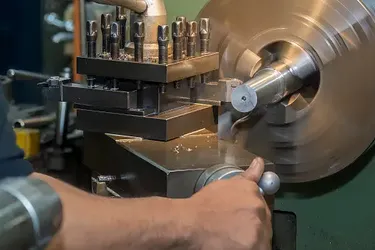What is the Working Principle of a Lathe Machine?
If you've ever been curious about how objects like screws, bolts, or even table legs are perfectly shaped, you might find the answer in the fascinating world of lathe machines. These remarkable machines are essential in manufacturing, helping create symmetrical and precise parts out of raw materials. But how exactly do they work? Let's dive into the working principle of a lathe machine, ensuring we understand this vital piece of machinery without getting lost in technical jargon.
Understanding the Lathe Machine
A lathe machine is a versatile tool used to perform various operations like cutting, sanding, knurling, drilling, or deformation. This is achieved by rotating the workpiece around a stationary cutting tool. The lathe machine has been around for centuries, evolving from simple hand-operated devices to the sophisticated, computer-controlled machines we see today.
The Basic Components of a Lathe Machine
To grasp the working principle, it's essential to familiarize ourselves with the main components of a lathe machine:
Bed: The base of the machine, providing support and alignment for all other components.
Headstock: Houses the main spindle, speed change mechanism, and the drive motor.
Tailstock: Positioned opposite the headstock, it supports the other end of the workpiece.
Carriage: Moves along the bed to guide and hold the cutting tool.
Lead Screw: Facilitates precision movement of the carriage.
Feed Rod: Provides movement to the carriage or cross slide.
The Working Principle Explained
The core principle of a lathe machine is quite simple: the workpiece rotates while a stationary cutting tool shapes it. Here’s a step-by-step breakdown:
- Mounting the Workpiece: The material to be worked on is securely clamped between the headstock and tailstock. The headstock rotates the workpiece, while the tailstock can hold tools or support the workpiece.
- Rotating the Workpiece: The spindle in the headstock spins the workpiece at various speeds, controlled by the operator or programmed in CNC lathes.
- Engaging the Cutting Tool: The carriage, controlled either manually or automatically, moves the cutting tool to the desired position. The tool remains stationary as the rotating workpiece comes into contact with it.
- Shaping the Material: As the workpiece spins, the cutting tool removes material to shape it into the desired form. The carriage can move longitudinally (along the length of the workpiece) or transversely (across the diameter).
Types of Lathe Machines
Lathe machines come in various types, each suited for specific tasks:
Engine Lathes: Common in workshops, versatile for various operations.
Turret Lathes: Ideal for repetitive production of identical parts.
CNC Lathes: Computer-controlled for high precision and automation.
Toolroom Lathes: Used for precision work and tool making.
Applications of Lathe Machines
The applications of lathe machines are vast, ranging from woodworking to metalworking, and even in the medical field. Here are some common uses:
Manufacturing Parts: Creating cylindrical parts like shafts, bolts, and screws.
Woodturning: Crafting furniture legs, bowls, and other wooden objects.
Metalworking: Producing components for machinery and vehicles.
Jewelry Making: Shaping metals for rings, bracelets, and other items.
Precision and Accuracy
One of the standout features of lathe machines is their ability to produce highly precise and accurate parts. This precision is crucial in industries where even a minor deviation can result in significant problems. For example, in the automotive industry, precise engine components ensure optimal performance and longevity.
The Evolution of Lathe Machines
The journey of the lathe machine from ancient Egyptian wood lathes to modern CNC machines is a testament to human ingenuity. Early lathes were operated manually, requiring significant skill and effort. The Industrial Revolution brought steam-powered lathes, increasing efficiency and precision. Today, CNC lathes represent the pinnacle of this evolution, combining computer technology with traditional machining principles.
Safety Precautions
Operating a lathe machine requires adherence to safety protocols to prevent accidents. Some essential safety tips include:
Wear Protective Gear: Always wear safety glasses, gloves, and appropriate clothing.
Secure the Workpiece: Ensure the material is tightly clamped to avoid slipping.
Check the Machine: Regularly inspect the lathe for any issues or wear.
Follow Instructions: Always follow the manufacturer’s guidelines and operational procedures.
Maintenance of Lathe Machines
Proper maintenance of lathe machines ensures their longevity and optimal performance. Regular lubrication, cleaning, and inspection are crucial. Replacing worn-out parts promptly can prevent major breakdowns and ensure safety.
Conclusion
Lathe machines play an indispensable role in modern manufacturing, offering precision and versatility. By understanding their working principle, components, and applications, we can appreciate the complexity and utility of these machines. Whether in a small workshop or a large industrial setting, lathe machines continue to be a cornerstone of production and craftsmanship.



